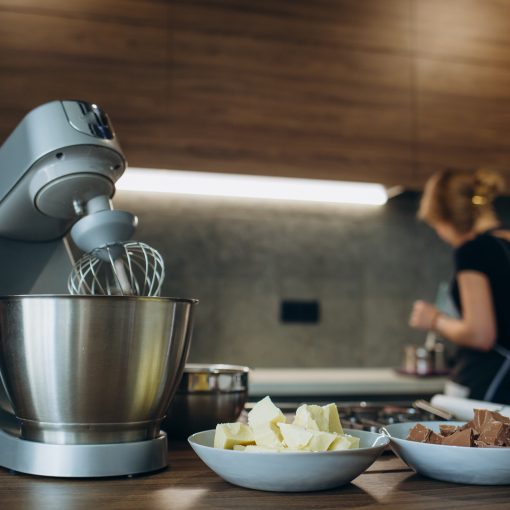If your stand mixer has started acting up during baking or food prep, the gear assembly could be the hidden issue. We’ve seen this problem often. It usually starts with subtle signs, but if left unchecked, it can lead to major breakdowns. Let’s walk through the real indicators that your mixer might need a new gear assembly, along with what to do about it.
What the Gear Assembly Actually Does
The gear assembly is what allows the mixer’s motor to power the moving parts that do all the heavy lifting. That is to say, without it, your mixer is just a decorative paperweight. It usually includes a series of metal or plastic gears inside the mixer’s head. These gears transmit motor power to the planetary system that spins the attachments.
Over time, these gears can wear down or even break, especially if your mixer is used often or runs under heavy load. For instance, dough mixing puts more strain on gears than whipping egg whites. Knowing how these parts function helps you spot problems early and prevent further damage.
Sudden Stops or Skipping While Mixing
One of the clearest signs of gear trouble is when the mixer skips or stops altogether during use. Most importantly, this usually happens when the motor is still humming but the beater is not spinning. If it only happens occasionally at first, you might dismiss it. However, intermittent issues like this often mean a worn or cracked gear is starting to fail under pressure.
Sometimes you’ll hear a slight grinding noise or even a click before the beater stalls. This noise is the sound of gears slipping against each other or losing contact entirely. That’s not something that fixes itself. Therefore, if you notice this behavior, it’s time to stop using the mixer until you figure out the cause.
Unusual Noises from the Mixer Head
Mixers normally make some noise, but if you start hearing new sounds like grinding, rattling, or whining, pay attention. These sounds usually come from inside the mixer head. In other words, they often point to gear damage. As a result, you may be dealing with stripped teeth on one of the gears or metal scraping due to misalignment.
Plastic gears are especially prone to this kind of damage over time. Likewise, if the mixer was dropped or stored in a damp spot, gear corrosion or cracking could happen faster. This kind of wear often develops silently at first, then escalates quickly once the problem reaches a tipping point.
Loss of Power or Inconsistent Speed
Another sign to look for is inconsistent mixing speed. You might set the dial to level four and watch it work like level one. Or worse, it might jump between speeds on its own. Inconsistent output like this usually comes from gear slipping or partial gear failure.
We’ve had cases where customers thought the motor was dying, but it turned out to be the gear assembly struggling to maintain load. To clarify, the motor was fine, but the gears couldn’t transfer power efficiently. This is why diagnosing gear issues early can save the motor and avoid the need for more expensive repairs.
Mixer Runs but Attachments Don’t Move
Sometimes, the mixer runs normally and sounds okay, but nothing happens with the attachments. This is a textbook case of broken gears. Most commonly, the pinion gear that connects the motor to the rest of the gearbox is the one that fails.
If this happens, you’re left with a working motor and no output. To fix it, the entire mixer head usually needs to be opened, inspected, and the damaged gear replaced. We’ve found that in many models, access to the gear assembly requires removing several screws and reapplying grease once repairs are done.
To understand this better, you can explore mixer repair services in Calgary to see what professional repair includes and whether it’s time to get help.
Gear Grease Leaking from the Mixer
Gear assemblies are packed with special grease that helps keep the parts moving smoothly and quietly. If you notice thick, grayish grease leaking from the seams of your mixer head, this could be a red flag. It usually means that the internal components have shifted or cracked.
As the gears heat up during use, damaged seals allow the grease to escape. Consequently, this leakage leads to dry gear contact, more friction, and accelerated wear. If you catch the leak early, cleaning and resealing might be enough. Otherwise, you may need to replace part or all of the gear assembly.
Visual Checks You Can Do at Home
If you’re handy, there are a few things you can check safely before calling in a repair. First, unplug the mixer. After that, remove the attachment and tilt the head back if it allows. You may notice excess play or looseness where the attachment hub connects. This movement can be caused by gear backlash or missing teeth.
Some mixers also allow removal of the gear housing cover with basic tools. Inside, you might find plastic shavings, worn gear teeth, or dried-up grease. While these signs don’t confirm total failure, they are strong indicators that you need to look deeper or request a diagnosis from a technician.
Replacing vs Repairing: What Makes Sense
Not every mixer is worth fixing, and not every gear issue requires full replacement. That is to say, sometimes one cracked gear can be replaced in an hour. Other times, especially with older or overused mixers, a full assembly swap is more cost-effective.
As a general rule, if your mixer is over ten years old and has seen heavy use, replacing the whole gear set ensures better long-term performance. On the other hand, if it’s just one damaged part and the rest is clean, a targeted fix is fine.
We’ve seen both types of repairs work well. The key is doing a proper assessment before making that call. If you’re unsure where to start, contact the appliance specialists who work with mixers regularly and ask what repair type suits your model.
When to Call for Professional Help
We always support DIY troubleshooting when it’s safe. However, gear replacement involves opening up electrical parts, managing grease mess, and possibly aligning gear teeth correctly. If that sounds frustrating or risky, it might be time to book a technician.
The earlier you act, the cheaper and simpler the repair. Most importantly, catching gear wear before it affects the motor can prevent full breakdowns. If your mixer is acting up and you’ve ruled out speed control and attachments, gear assembly is a likely cause.
If you’re searching for expert mixer repair services in Calgary, that’s where you’ll find professionals who understand the gear systems inside out. They can give you a full picture and quote before you commit.
FAQs
What causes the gear assembly in a mixer to wear out?
Most gear assemblies wear out from friction, frequent heavy loads like kneading dough, or heat buildup. Over time, this causes gear teeth to strip or crack, especially in plastic components.
Can I use my mixer if the gear assembly is partially damaged?
We don’t recommend it. Continued use can damage other parts of the mixer, including the motor. It’s safer to stop using the mixer and check what’s wrong before it gets worse.
How do I know if it’s the motor or the gear causing the issue?
If the motor runs but the beaters do not move, it’s usually a gear problem. If the mixer won’t turn on or makes no noise at all, the motor or power supply may be to blame.
Is it worth repairing an old mixer with gear issues?
That depends on the brand, model, and overall condition. If the mixer is high-quality and parts are available, gear repair is often worth it. Otherwise, replacement might be the better route.
Can I prevent gear damage in my mixer?
Yes, avoid overloading the mixer, clean it regularly, and store it in a dry place. Also, keep an eye on unusual sounds or behavior. Early detection is key to longer gear life.




